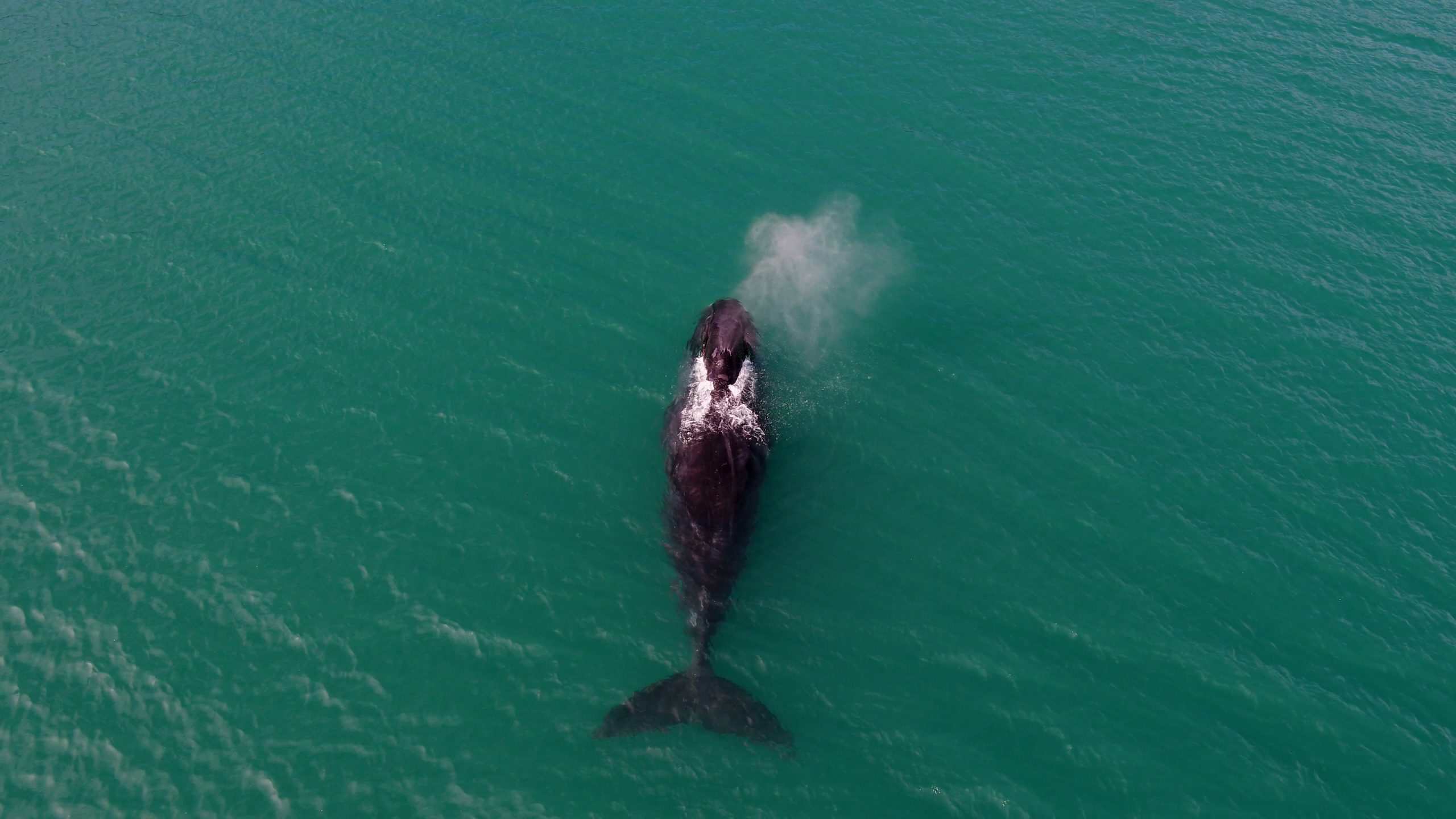The Bowheads of Baffin Island
New tools—from drones to crossbows to suction-cup cameras—are helping researchers understand bowhead whales in the Canadian Arctic.
Bowhead whales are fascinating creatures—even by whale standards. Named for their arched mouths, which happen to be the largest maws of any animal, these whales are now also believed to be the longest-living mammals. Their potential lifespan is over 200 years. That means there may be bowheads in these frigid Arctic and subarctic waters that were born about the same time as Queen Victoria.
Bowheads’ extreme environment has forced them to evolve a protective blubber layer that can be almost half a meter thick, more than any other whale species. These whales’ skulls are also uncommonly thick— so much so they can bash head first through ice sheets 20 centimeters deep.
The global bowhead population began rebounding after being decimated by the whaling industry of the 19th and 20th centuries, partly due to a relative absence of vessel traffic in their native waters. However, as the Arctic is warming—nearly four times faster than the rest of the planet—bowheads are facing new challenges. One of these involves their food: tiny creatures called zooplankton.
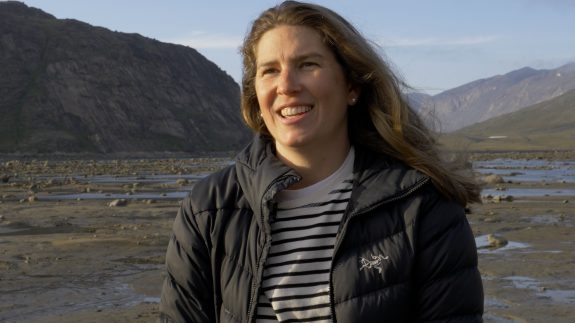
Sarah Fortune began researching bowhead whales in the fjords around Pangnirtung, a hamlet on Baffin Island, Nunavut, in 2013. She’s now the Canadian Wildlife Federation chair in Large Whale Conservation and an assistant professor in the Department of Oceanography at Dalhousie University in Nova Scotia. She has returned to Pangnirtung several times to research bowhead whale behavior and feeding.
“We want to know how climate change is affecting the quality and quantity of prey for these large whales,” says Fortune. “Large whales that feed on zooplankton can be considered, you might say, the canaries of the sea.”
Bowheads eat approximately six tonnes of zooplankton per day. That is a lot of mass to depend on from organisms that can barely be seen with the naked eye. This makes bowheads, along with other zooplankton-feeding whales, an indicator species for ecosystem health—because their tiny prey are so sensitive to changes in marine temperature, salinity, and other conditions.
“Bowhead whales rely on these large-bodied, energy-rich, really fat and juicy Arctic zooplankton,” says Fortune. “These organisms do really well in cold Arctic environments, but as the ocean water begins to warm, then there’s a shift, and we have these smaller-bodied, lower-energy temperate zooplankton that begin creeping their way into the Arctic.”
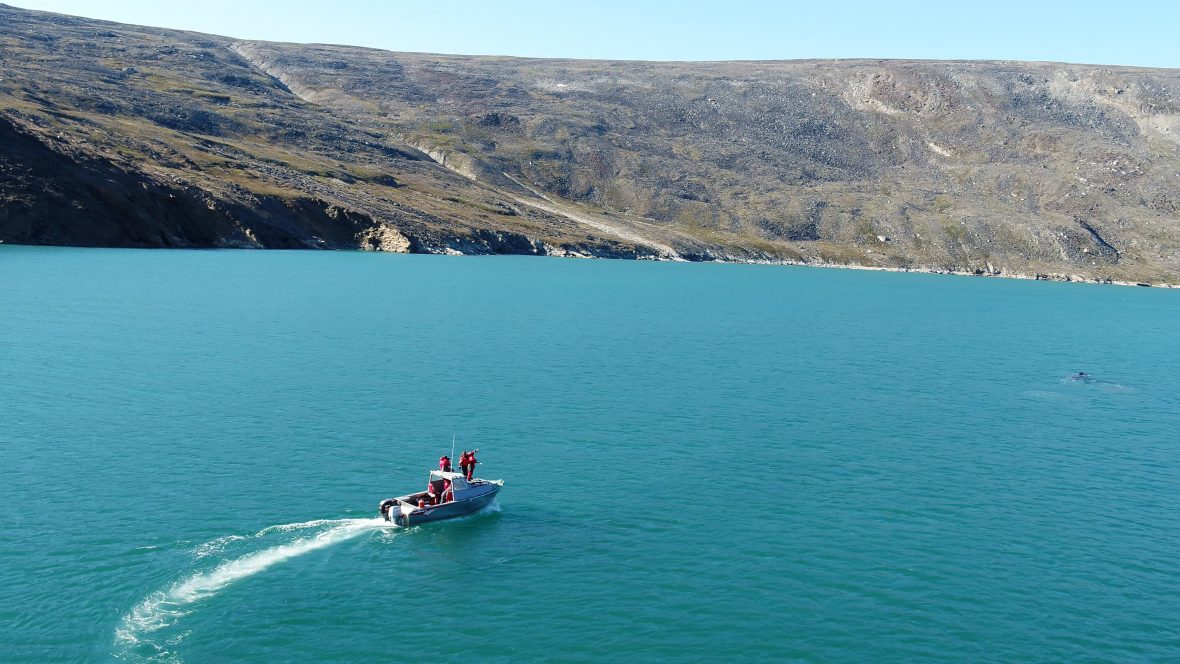
Depending on how much is available, lower-quality food means whales will need to work harder to meet their daily requirements, says Fortune. “So we might see things like skinnier whales in the Arctic, fewer adult females that are having calves, or longer times between calving events.”
To understand what is happening with the diet of the Eastern Canada-Western Greenland bowhead population, Fortune’s team deploys an arsenal of high-tech gadgetry. If arsenal seems the wrong word, consider that one of these gadgets is a crossbow fitted with a specialized dart for extracting tissue. Biopsy samples from these crossbow darts allow researchers to define the sex of individual whales as well as the total number of individuals observed. This becomes part of a long-term data set curated by Fisheries and Oceans Canada.
Hakai Institute videographer and drone operator Katrina Pyne joined Fortune’s expedition to the waters around Baffin Island in the summer of 2023. Pyne’s drone videos allowed the team to visually track whale behavior, determine age classes, and identify particular individuals. The footage also allows them to assess individuals’ body conditions over time—whether a certain whale is getting fatter, skinnier, or staying the same.
Pyne also had a front-row seat as the team sidled up to bowheads in their boats and used eight-meter carbon-fiber poles to attach suction-cup tracking devices to the whales’ backs. It’s not a simple task, says Fortune, but when successfully mounted, the tags tell researchers where the whales are in the fjord, how fast they’re moving, and how deep they’re diving. They even have cameras attached.
“The cameras give us a view from the whale’s perspective and are really useful for getting really detailed information about whale behavior,” says Fortune. “We can confirm whether or not the whale is feeding, engaging in a social behavior, or resting.”
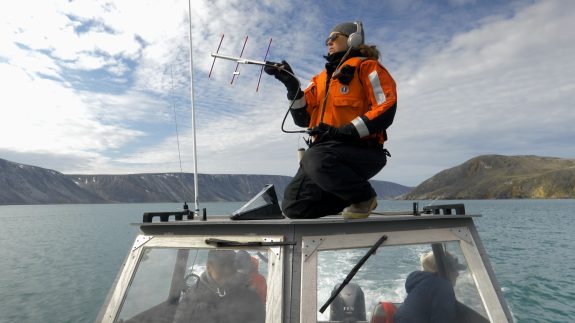
Fortune’s team also deploys an oceanographic cage of multiple measuring devices that includes another camera—this one with a macro lens that can record the tiny zooplankton at different depths in the water column. The high-tech cherry on the sampling sundae is a Dartmouth Ocean Technologies environmental DNA, or eDNA, sampler that can spot molecular traces left by fish and many other organisms, including bowheads and the killer whales that prey on them.
This is not the only way to get DNA: the team also gets it from collecting whale poop. When a researcher spots whale scat in the drone’s video feed, it’s a race to get to the sample and gather it before it dissipates. Hakai Institute research scientist Matt Lemay notes that he currently has a “freezer full of bowhead poop” that is being subjected to DNA analysis.
The summer of 2024 will bring another season of bowhead research for Fortune’s team. This time, she is hoping to take their use of drones a step further, using them to attach the suction cup tracking tags rather than approaching the whales with a boat. It’s a new technique, which will require new training, but it’s less stressful for the bowheads and gives the team a much longer reach.
Throughout, says Fortune, the team will continue to work with local Indigenous experts who have been studying Arctic whales in the field for over a decade.
“We’re looking forward to heading up again this summer. Working in the Canadian Arctic—and being with the people up there we’ve developed relationships with over the years—it’s just one of the most inspiring and humbling places to be.”
To learn more, check out the new Nature Files video from Hakai Institute, The Case of the Wayward Whales.
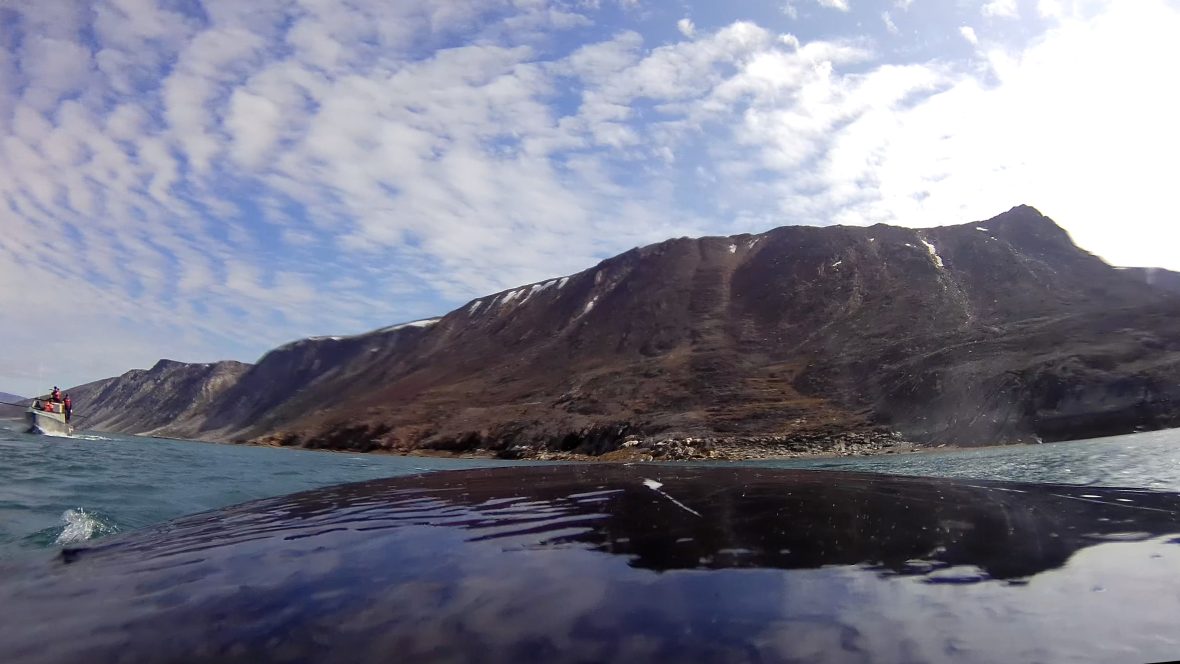
Bowhead whale data and footage was collected under permits:
OPA-ACC-2023-23 (Fisheries and Oceans Canada) and
# 1036656 (Dalhousie University Animal Care)

